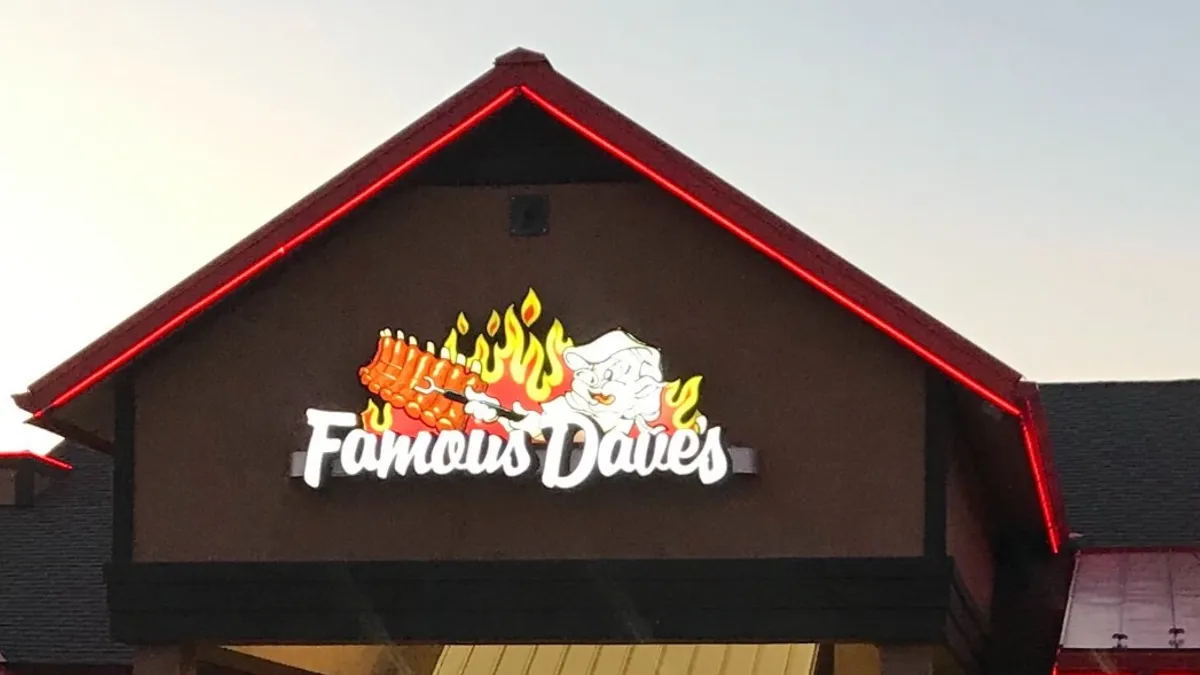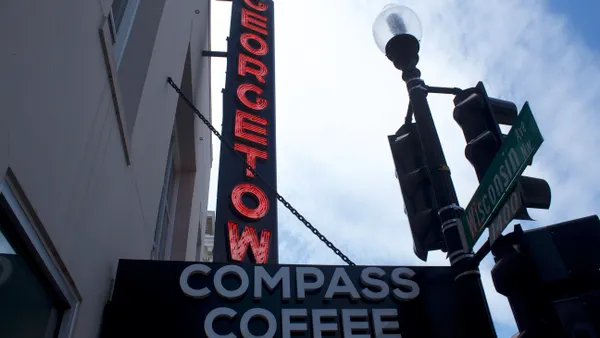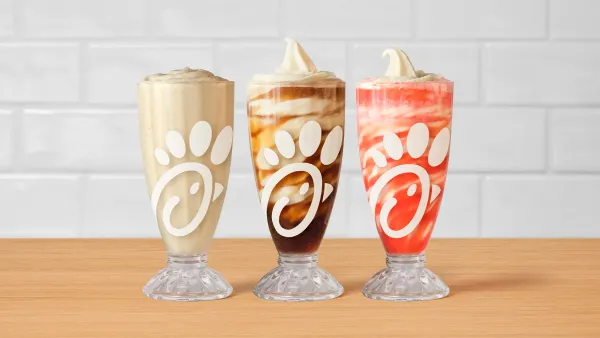Dive Brief:
- Famous Dave's signed a 25-unit development agreement with Bluestone Hospitality Group to expand its footprint through both Famous Dave's ghost kitchens and co-branded restaurants with Bluestone's Johnny Carino's brand, according to a press release. Bluestone, a Famous Dave's franchisee, also has a number of other restaurant concepts in its portfolio, including Burger King, On the Border and Popeyes.
- Famous Dave's, which currently has 125 locations, is also planning to add drive-thrus at both its existing locations and its planned locations, according to the release.
- Diversifying its footprint could help Famous Dave's better recover from the COVID-19 pandemic, which led to same-store sales declines of nearly 23% at company-owned locations during Q2 2020. Working within another restaurant also decreases rent, doesn't add much, if any, labor costs, and makes operations more efficient, Jeff Crivello, Famous Dave's CEO, said.
Dive Insight:
Famous Dave's sales began to turn around last year as the chain put greater focus on off-premise business. In late 2018, the company began scouting locations in both California and Minneapolis specifically to accelerate its catering and delivery businesses. The company also began testing virtual brands in 2019 to serve a separate menu of fried chicken and burgers under a different name, as well as ghost kitchens focused on off-premise and catering for the Famous Dave's brand. These moves have been part of of Crivello's plan to turn the "tired" chain around.
The pandemic only accelerated these plans, Crivello said. Many of these plans were already on the docket over the last few years, but something had to change to weather the current crisis, Crivello said. The company's sales were down by nearly 90% during the beginning of the pandemic, according to Restaurant Business.
But the company realized it could operate at 100% off-premise to weather part of this storm, and as of June, a Famous Dave's was operating out of a West Coast Johnny Carino's restaurants while another franchisee was renting space in a Chicago Cloud Kitchen facility.
"[Cloud Kitchen] gives us the ability to deliver our barbecue closer to where there's density in the city of Chicago without having a 6,000-square-foot restaurant," Crivello said.
Famous Dave's isn't the only casual dining brand to turn to ghost or virtual kitchen models during the crisis as foodservice delivery demand skyrockets. Brinker International added "It's Just Wings" brand to its existing locations this summer, for example. This is the restaurant company's first virtual brand, which operates out of Maggiano's and Chili's kitchens. The company expects It's Just Wings to become a $150 million brand in its first year. This level of growth would be significant, but it reflects the proliferation of ghost kitchens under pandemic conditions — Geoff Madding, CEO of virtual kitchen marketplace Nextbite, said COVID-19 has accelerated the ghost kitchen market by five years, for example.
Famous Dave's told FSR Magazine in December 2019 that the company had tried pick-up windows in the past, but that the experience wasn't as successful as a true drive-thru model. Famous Dave's told the publication it plans to open four drive-thru locations in 2020, and for 20% to 30% of sales to come through the channel.
The restaurant will have a lot of competition at the drive-thru window, however as a number of brands — including Shake Shack and Taco Bell — invest in new drive-thru concepts. Even brands with traditionally strong drive-thru channels are stepping up their drive-thru efforts. McDonald's generated almost 90% of its Q2 business at the drive-thru, and has trimmed its menu and rolled out its Dynamic Yield technology across stores, which likely contributed to faster speeds at the channel, for example.
Famous Dave's is wise to prioritize both ghost kitchen and drive-thru channels to capture off-premise demand, as drive-thru visits increased by 26% in the April, May and June quarter and Euromonitor estimates the ghost kitchen segment could create a $1 trillion global opportunity by 2030.
Julie Littman contributed to this article.











